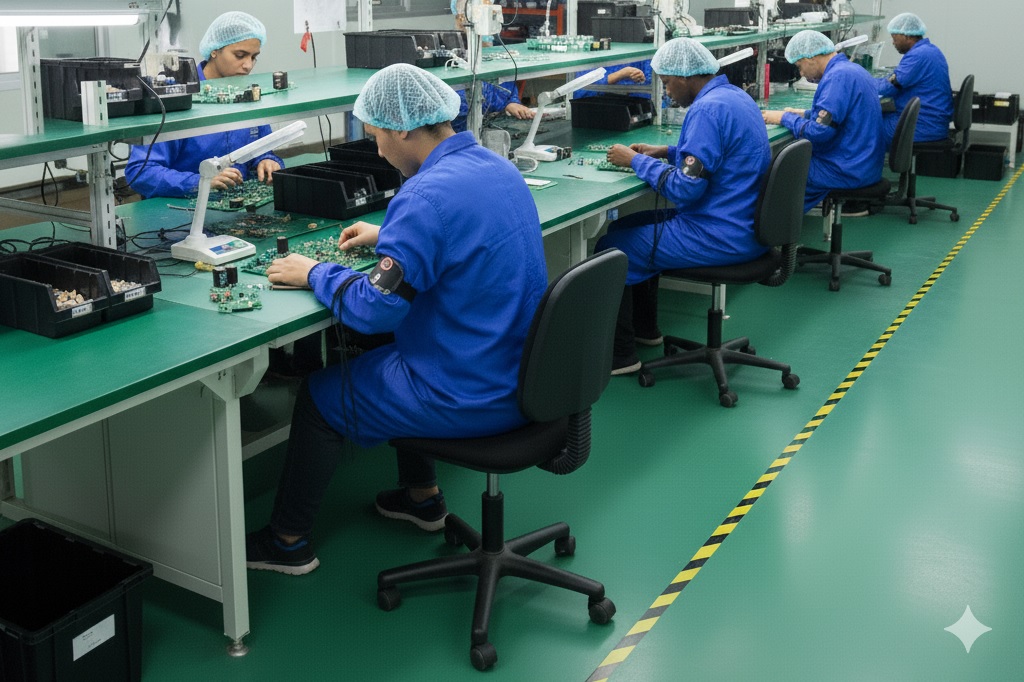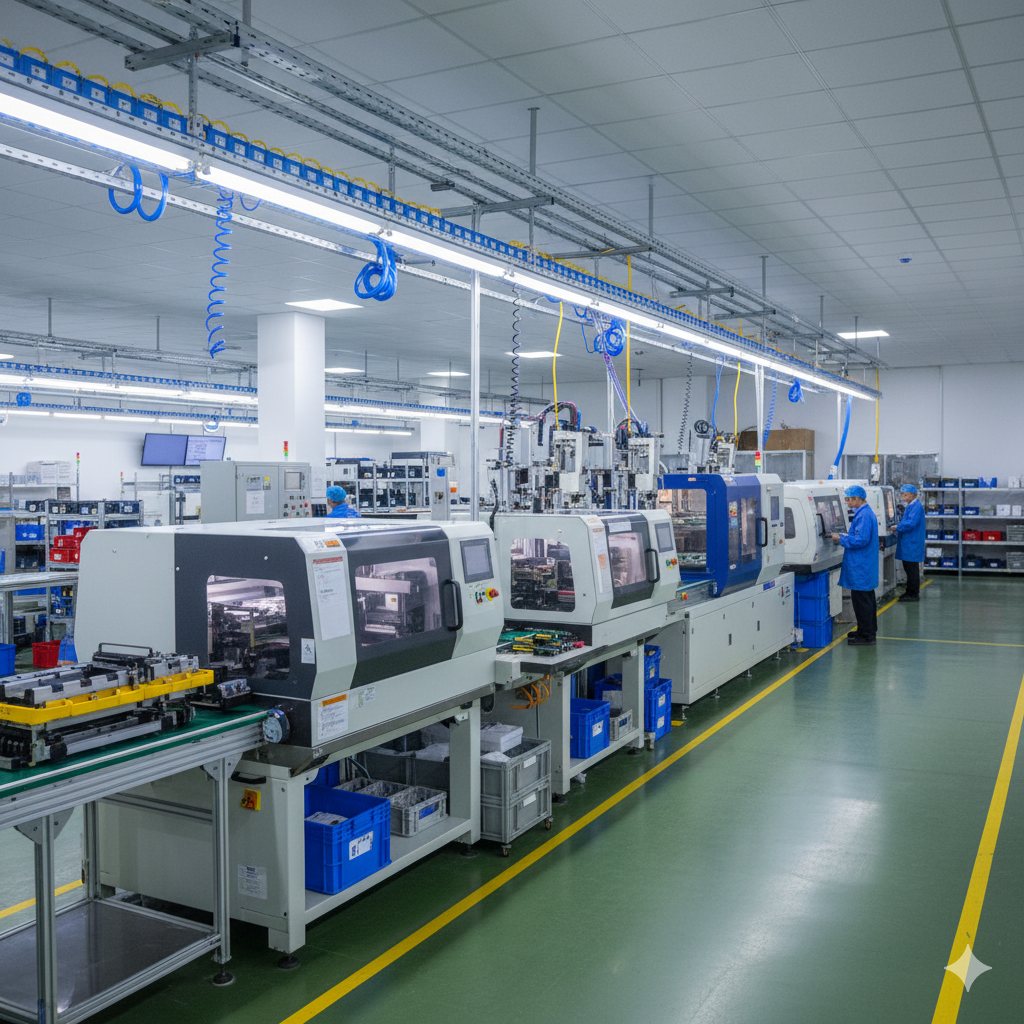Electronic Product Development Assembly Speed

5
Electronic Product Development & Assembly Speed— Fast Time to Market Without Sacrificing Reliability
A European OEM came to us with a simple mandate: ship sooner, without quality drama. Launch windows were tight, variants were high-mix, and audit expectations were EU-grade. We built a program that treats speed and reliability as the same problem—not a trade-off.

How we made electronic product development assembly speed safe
1) NPI pods that move in weeks, not quarters
Across-functional pod (PE/QE/Test/SCM) ran EVT→ DVT → PVT like a sprint cadence: short design loops, daily checklists, and a visible blocker board. Golden samples anchored decisions; first-article gates kept changes honest before the line scaled.
2) DFM/DFX/DFT that prevents downstream fire fighting
We front-loaded manufacturability, testability, and reliability: test-point access, stencil/land patterns, heat paths, connector clocking, and cabling bend-radius rules. Boundary-scan/JTAG covered dense nets; guard-banding normalized limits before volume.
3) Test early, test complementary (not just more)
We combined ICT (opens/shorts/values), FunctionalTesting (power-up,interfaces, sensors/actuators), and EOL testing (final feature + safety). Each stage caught a different failure mode, so speed didn’t become rework.
4) Evidence by design (so audits don’t slow you down)
Every unit was serialized; OBP bound firmware + checksum to MES; calibration/limit files were version-controlled; and no-pass/no-ship logic lived at the station. When the customer’s SQA asked, the proof was already there.
Electronic Product Development Assembly Operations that actually move faster
- Parallel line bring-up: cloneable fixtures and recipes let us stand a second lane while the first still learned.
- BOM risk mapping: alternates pre-approved on long-lead/at-risk parts; AVL expanded without changing function or safety.
- Kitting discipline: kit-integrity checks at inbound, at line-side, and at first-article—so changeover speed didn’t spawn shortages.
- Supplier choreography: plastics/labels/pack synchronized; labels templated for EU/US compliance from day one.
What the buyer felt (real-world outcomes, not slogans)
- Launches held dates. Schedules stabilized because change control lived inside the pod, not across three vendors.
- Yields didn’t wobble when mix changed. Clear defect taxonomy + complementary test kept FPY predictable in LVHM.
- Audits were faster. Serial-tied logs (OBP → test → pack) matched what quality teams needed—without a data hunt.
- Less firefighting = lower cost-to-serve. Fewer expedites, cleaner RMAs, calmer ops reviews.
A single model’s path (so you can picture it)
- Circuit Board build: SMT/THT; ICT hits inaccessible nets; AOI + visual where meaningful.
- Identity: OBP programs firmware, binds ID + checksum to MES; label template prepped for region.
- System proof: FCT exercises I/O, sensors/relays; guard-band limits tuned off golden sample.
- Final gate: EOL verifies features, safety, torque/label/seal; no-pass/no-ship blocks the next step.
- Pack & trace: carton/pallet IDs bind to unit history for returns and scorecards.
What we needed to start product development (and what the customer got back)
Customer Provided: BOM + AVL, Gerbers & stack-ups, firmware/comm requirements, regulator targets (EU/US), environmental constraints, ramp windows, and success criteria(yield/OTD).
Customer Received: a DFX pack,coverage matrix (ICT vs FCT vs EOL), capacity ladder (how we add people/fixtures/stations), and a week-by-week NPI plan with gates and artifacts.
Product Development Program Snapshot
- Scope: 5 models from one platform family; awarded last year.
- Why us: internal test engineering, tight MES, and a pod that treats speed as a quality problem.
- Status: models launched on staggered cadence; FPY held steady across variant changeovers; audits cleared without delay.
Electronic Product Development Assembly Speed and Quality Results
-
Fast worked for the customer because it was built on proof. We were able to ship sooner without pain due to our front-loading of DFX/DFT, running complementary tests that close real failure modes, and wire traceability into the product—so speed wasn’t a gamble, it’s a system that our team has refined and continually improved over the years.
Download Electronic Product Development Assembly Speed Article
Product Development Assembly Speed Article
Subscribe to Our Newsletter




